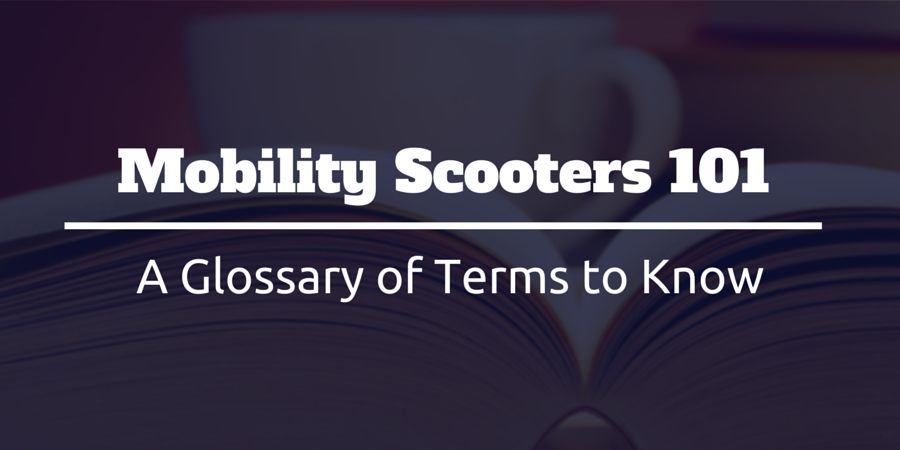When you’re shopping for
mobility scooters online, you might encounter some confusing vocabulary. To help you make the right decision, here’s what those terms mean and why they matter.
Batteries
Batteries are what give mobility scooters their power. Most use multiple 12-volt batteries, which are rechargeable. In descriptions of batteries, you might notice the abbreviation “Ah.” This stands for “amp hours.” The more amp hours in a battery, the longer it can last. Larger scooters have batteries that reach 75Ah, which equals about 20 hours of running time before a recharge. Portable scooters usually have batteries with 12Ah.
Controls
Unlike a car, you don’t use your feet to control a mobility scooter. It’s all in the hands. A lever called the “wig-wag” is used to put the scooter into drive. You use your thumbs on the wig-wag and fingers on the control paddles to move your scooter forwards and backwards. Usually, the forward controls are on the right paddle and the backwards controls are on the left, but in some scooters it is reversed to accommodate left-handed people.
Ground Clearance
Ground clearance is a measurement of how high above the ground a mobility scooter sits. This is especially important if you plan on taking your scooter outdoors, as you don’t want it getting stuck on bumps and rocks.
Operating Range
This is how far your scooter can go before needing a recharge. It will vary depending on your weight, the surface you’re riding on, the age of the scooter’s batteries, and other factors.
Seat Size
The seat size of a scooter depends on the overall size of the scooter. Usually, smaller scooters have smaller seats with lower backrests and fewer adjustability options. Larger scooters usually have larger seats, more adjustability options, and sometimes even headrests. Almost all scooter seats swivel to let you on and off easily.
Tiller
The tiller is the front column of your mobility scooter; you use it to steer, turning it with the attached handles. Most tillers are adjustable, although some are not. Before buying a scooter with a fixed tiller, make sure it’s in a comfortable position for you.
Turning Radius
Turning radius is a measurement of how tightly your scooter takes turns. The smaller the turning radius, the more maneuverable it will be, which is important if you plan to use it inside, navigating around furniture and through doors and hallways.
Unit Weight
As the phrase implies, unit weight refers to the overall weight of your scooter. This is important to know if you plan to transport your scooter.
Weight Capacity
The weight capacity of your scooter is the maximum amount of weight it can hold. If you put more weight on your scooter than it can handle, it might break down.
Are there any terms you've seen that you think need defining? Post them in the comments below.
Consider
advantages and disadvantages of mobility scooter and power wheelchair to make a right purchase desicion.

